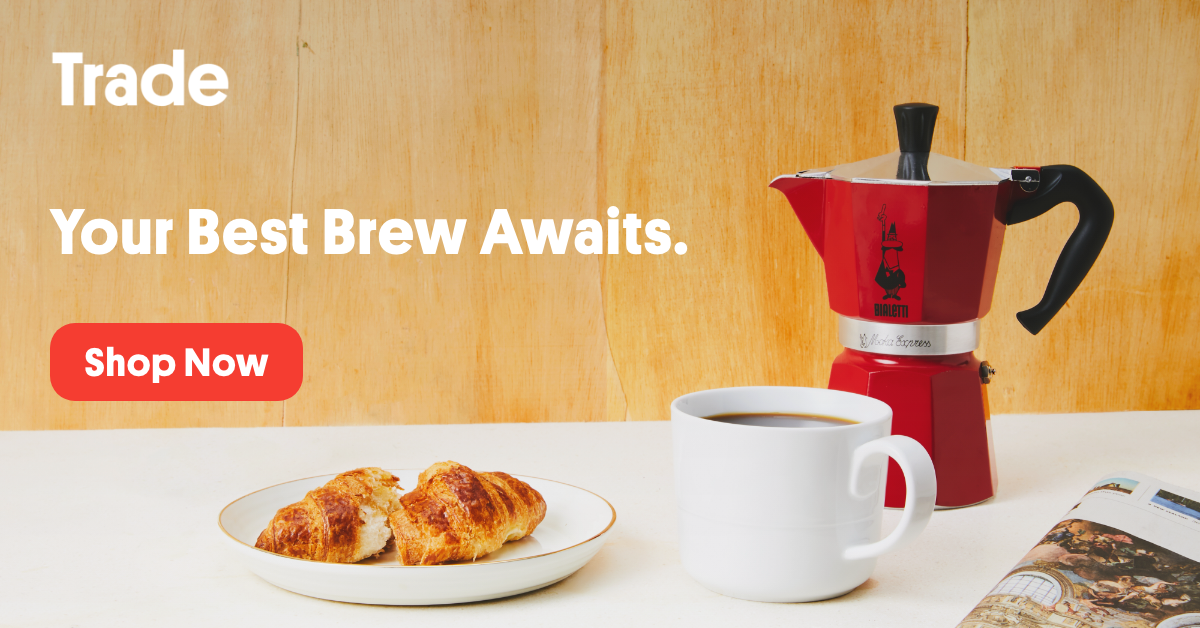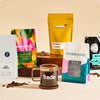Hello, coffee lover! We know brewing great coffee can seem really intimidating, and that the sheer number and complexity of brewing guides out there don’t help matters, so we’ve decided to help. Rather than think about coffee-brewing expertise as something you have to have right now, let’s look at it like a relay race: It’s much easier to run a marathon for the first time if you break it up into chunks.
You’re ready to get advanced! Now that we’ve explored coffee-to-water ratio and grind size, we’re going to put them together. Buckle up, coffee lover, because today we’re taking a closer look at brew time. This lesson will be most applicable to manual brewing methods (French press and pour over) as well as espresso, though as you’ll learn, you can also manipulate the brew time on automatic drippers by playing with — you guessed it — your recipe and grind size.
Brew time can be defined, somewhat obviously, as “The amount of time it takes to brew a batch of coffee from start to finish.” The start is the instant that water and ground coffee come into contact with one another, and the finish is usually when the coffee grounds and water cease touching one another. (Your mileage will vary re: the type of contact as well as how “finished” the finish is: For example, water will simply stop flowing out of a Chemex filter, signaling the end of a brew, but the grounds and brew liquid may still be in some contact in a French press even after the plunger has been depressed.)
Different brewers are designed with ideal brew times in mind, and most of them come with a suggested range: Generally speaking, everything except espresso or espresso-like preparations (AeroPress, for example) falls within a three to five minute window.
Now, the important thing to consider here is that there are a few ways to manipulate brew time, and they all require your close attention. You can manipulate the brew time by:
- Changing your coffee-to-water ratio
- Adjusting your grind size
- Manually changing the flow rate or contact time between the water and coffee
For simplicity’s sake, we’ll use a pour over method to illustrate this point, though feel free to consider how the principles might be applied to French press or espresso.
Coffee-to-water ratio
You can attempt to speed up or slow down the water’s flow rate through the coffee grounds by adding more coffee (to make the bed of grounds thicker) or using less coffee (to make the bed of grounds thinner). Generally speaking, the more coffee there is in the filter, the slower the water will pass through it, because it will be busy saturating the grounds and extracting soluble material from them. If there is less coffee in the filter, there will be less material for the water to pass through, so it will go on its merry way a bit faster.
Grind size
Imagine you were pouring water evenly and simultaneously into one sieve full of river rocks, and one full of sand: Which do you think the water would pass through first? The rocks, right? They don’t fit together as closely and the water won’t be absorbed as much by the material. Well, coffee grounds are the same way: Your coarse grounds are more like those rocks, and your fine ones are more like sand, so you can control how quickly the water passes through the coffee bed by adjusting the grind.
Manually
You can take some control over the speed of the extraction by manipulating the water’s flow rate through the coffee bed, either by pouring a greater volume of water into the filter (which will increase the water’s weight in the brewer and will force some of it through the coffee) or by stopping the flow of water before the recommended brew time is up.
In all three of these cases, however, the possibility of an over- or under-extracted brew still exists, and the key is to find the sweet spot that combines coffee recipe, grind size, and brew time in harmony. How will you know? By tasting, of course!
Just like with our last exercise, you’ll brew coffee three times. Since we noted the brew times in the last exercise, and we already touched on our recipe, let’s focus on manipulating the flow rate of your water in a pour over brewer.
If you don’t have a pour over brewer, feel free to deduce another way to control the brew time. For instance, plunge your French press a minute earlier or a minute later than you usually do. Using an automatic brewer? Turn it off 30 seconds before the cycle is complete.
Step-by-step instructions
- Using the coffee-to-water ratio you settled on in exercise one and the grind size you calibrated in exercise two, brew a batch of coffee the way you normally do and be sure to record how long the batch takes: Start the timer as soon as water and coffee make contact, and stop it when the last drop of brewed coffee comes out.
- Pour the finished brew into a carafe or mug and set aside to cool.
- While the first batch is cooling, brew again — this time pouring a very thin stream of water into the filter continuously until you reach your desired volume. Pour as slowly as you possibly can (it will probably feel pretty maddening, but the results should be worth it)! Don’t forget to time yourself.
- Repeat step two.
- Brew one last time. Instead of pouring a little bit at a time, pour a larger volume of brewing water onto the grounds to start, trying to keep the volume in the filter bed relatively high until you reach your desired volume. Again, record the results.
- Taste!
As you’re tasting the coffees, remember that we’re looking for bitterness, sourness, and sweetness — which of the brews tastes the sweetest? How long did the brew time take? What are some other ways that you can adjust or control your brew time? Remember there are no “right” or “wrong” answers here: We’re simply taking a journey together down the fun and fascinating rabbit hole of coffee extraction, in search of the best possible coffee experience we can find.
Good luck, have fun, and happy brewing!






